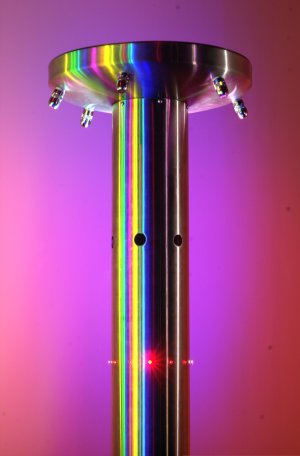
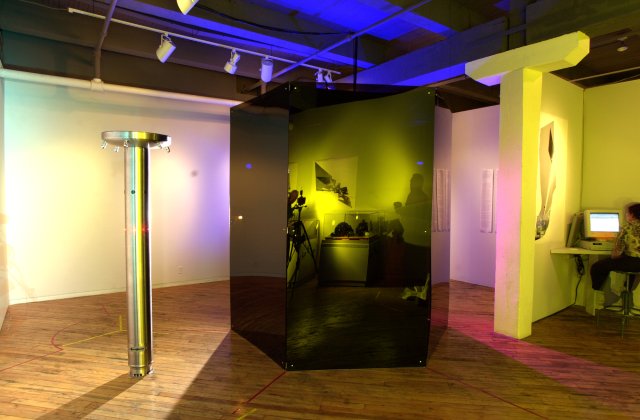
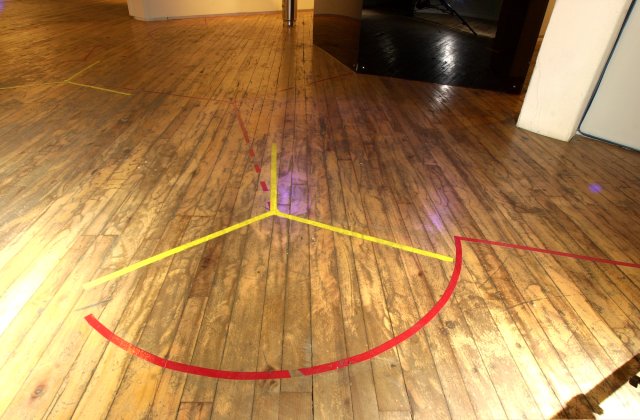
Separate entrances for men and women are to be provided. Three of the six rooms are for men, and the other three are for women.
A Bradley column shower is to be installed in each of the two shower rooms.
A Bradley six station
column shower donated by Bradley Corporation
has already been installed in the men's washdown room:

The knobs and soap dishes have been removed from the column shower,
and the holes where these items once were have been replaced with a
machine vision system comprised of 12 laser diode body scanners together
with six round lexan viewing windows moulded into the inside of the
column. There are two laser diode body scanners for each of the
video sensors that are located at each of the six stations,
for purposes of photometric stereo imaging of the bodies
of the users of the column shower.
A set of six video motion detectors with
an Internet connected machine vision computer is to be placed inside each
of the two column showers in the men's and women's washdown rooms.
The system is sealed and completely watertight. Here is a closeup
picture of the six round watertight
viewports of the column shower currently in use in the men's washdown room:
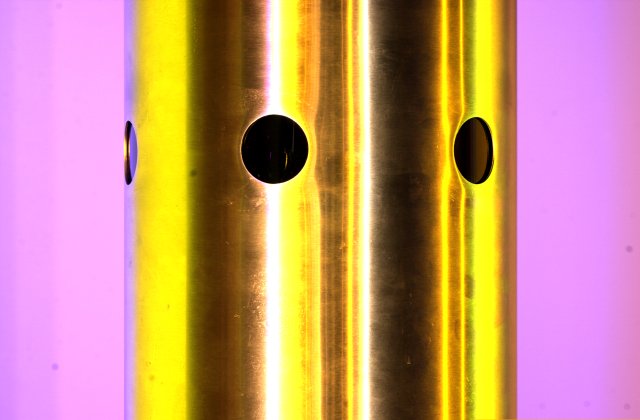
Three of the round smoked lexan viewing windows are visible here.
Up to six men can use this shower at the same time, but only the
number of stations actually being occupied will consume water.
Moreover, water is only consumed when a user is present.
Since there are no knobs or controls of any kind, there is no possibility
for deliberately destructive acts such as might otherwise happen
when users deliberately
(or accidentally) leave the water running.
Each of the six
nozzles face one side of the hexagonal shaped room to maximize
space usage and efficiency.
One of the six walls in this room is made entirely of smoked lexan, so that triage personnel or decontamination officers can supervise the decontamination process, whereas the six or fewer men in this room cannot see the triage personnel or decontamination officers, because of the darkness of the lexan (transmissivity is approximately 10 percent, meaning that transmissivity squared is approximately 1 percent, as compared to roughly four percent reflectivity of the surface, such that any visual perception of triage personnel or decontamination officers will fall below a noise floor).
Typically, however, the triage personnel or decontamination officers
operate the facility remotely by way of six video cameras installed in the
triage/observation room. These six cameras are connected to six
television receivers at a remote location, as shown below:
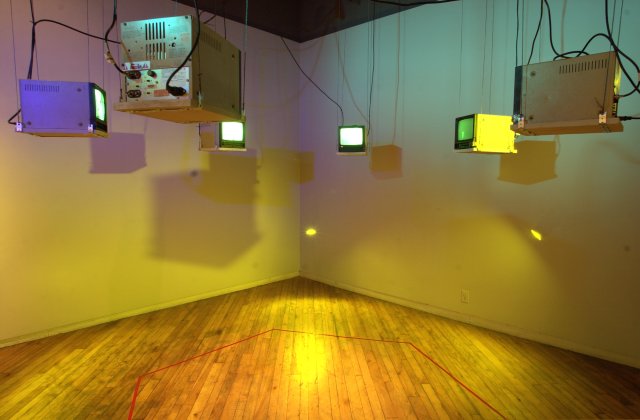
The six television receivers are arranged in the same hexagonal formation.
Six closed circuit television receivers suspended from the ceiling display outputs from each of the six decontamination rooms, as observed from the triage room.
The four of the six screens that are visible here correspond to (from left to right) the: